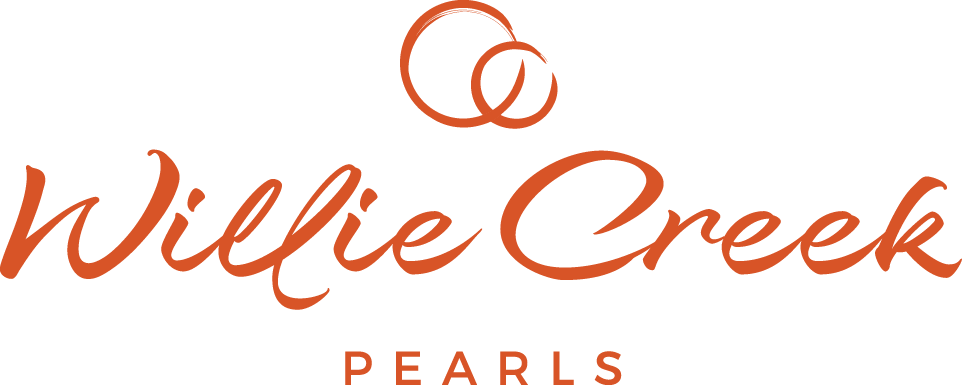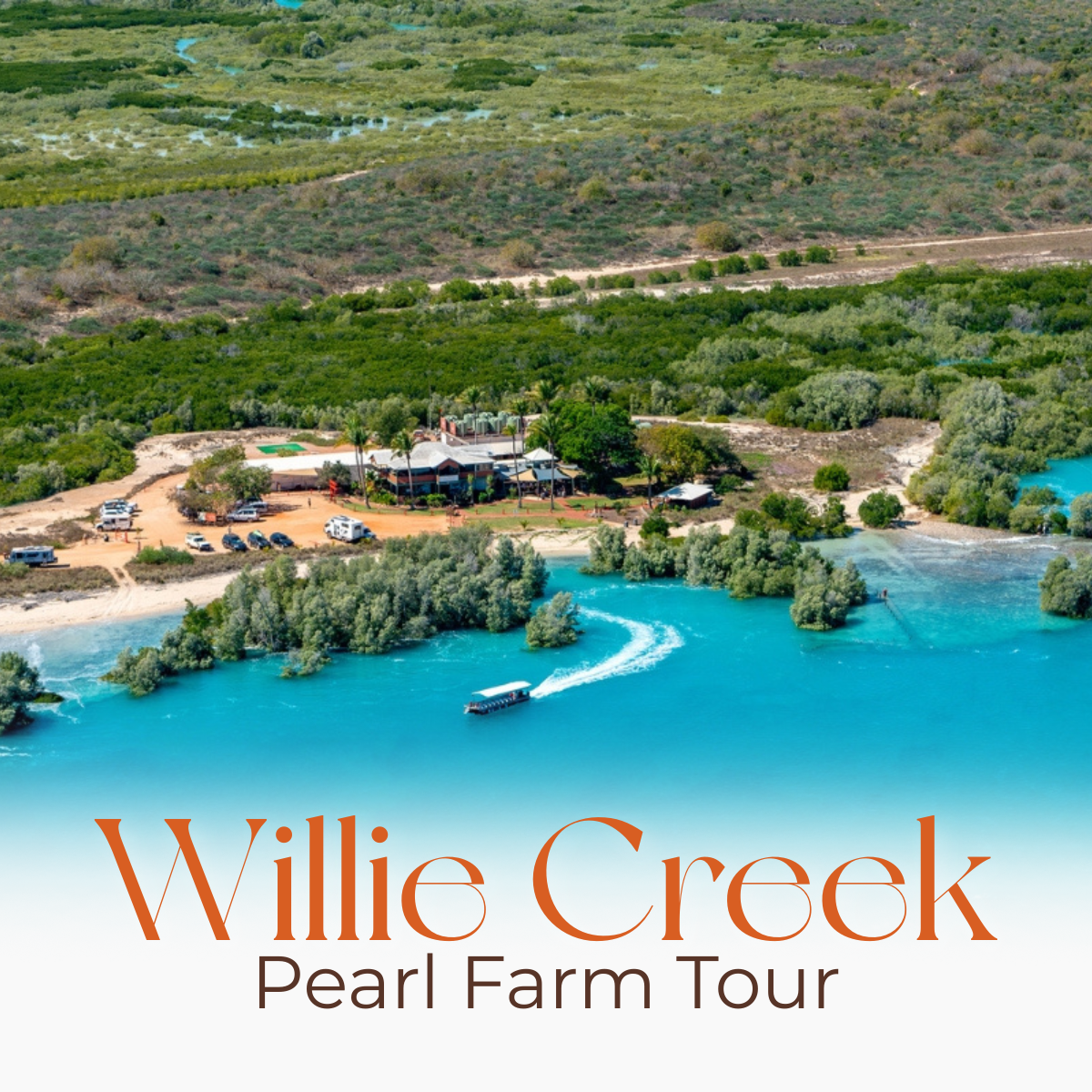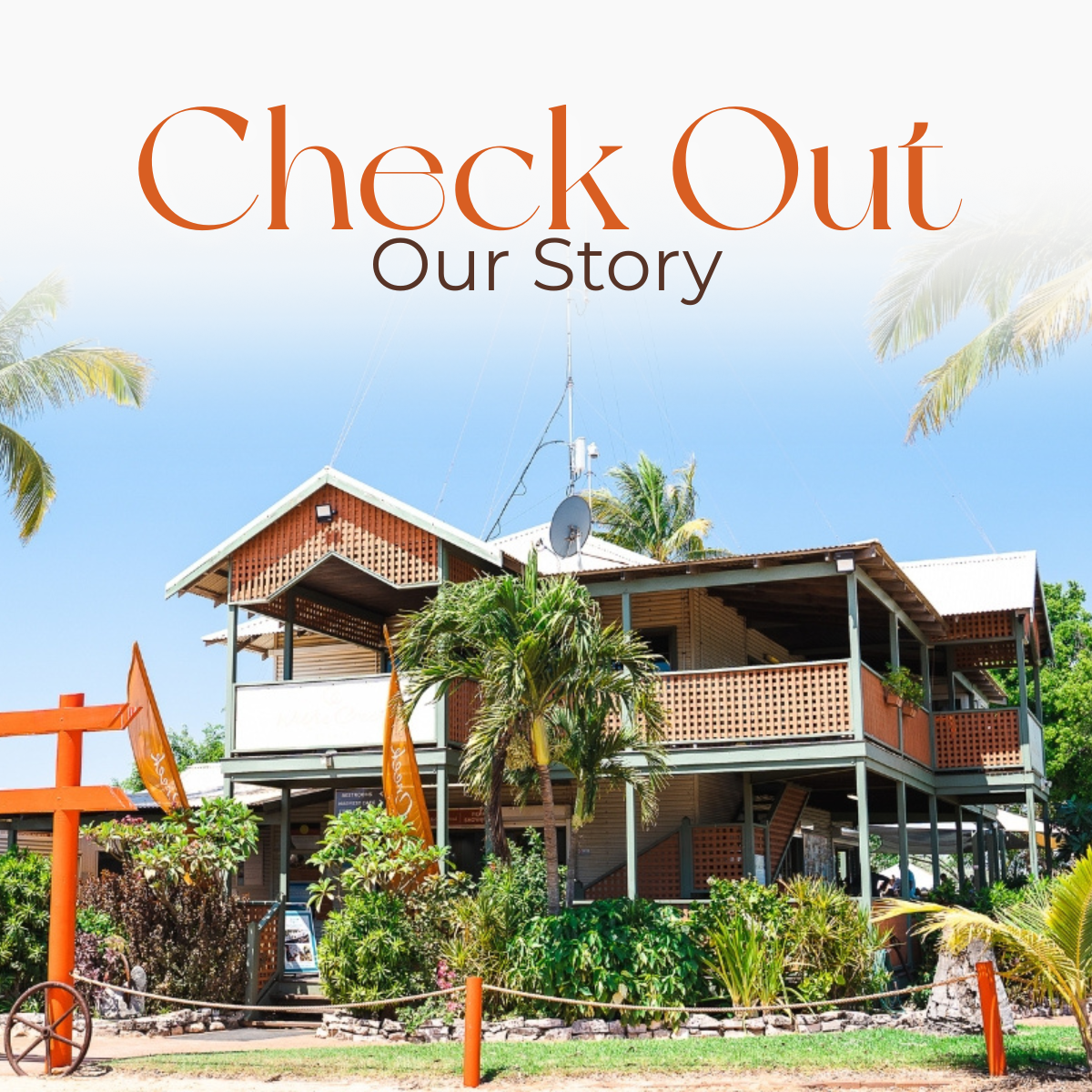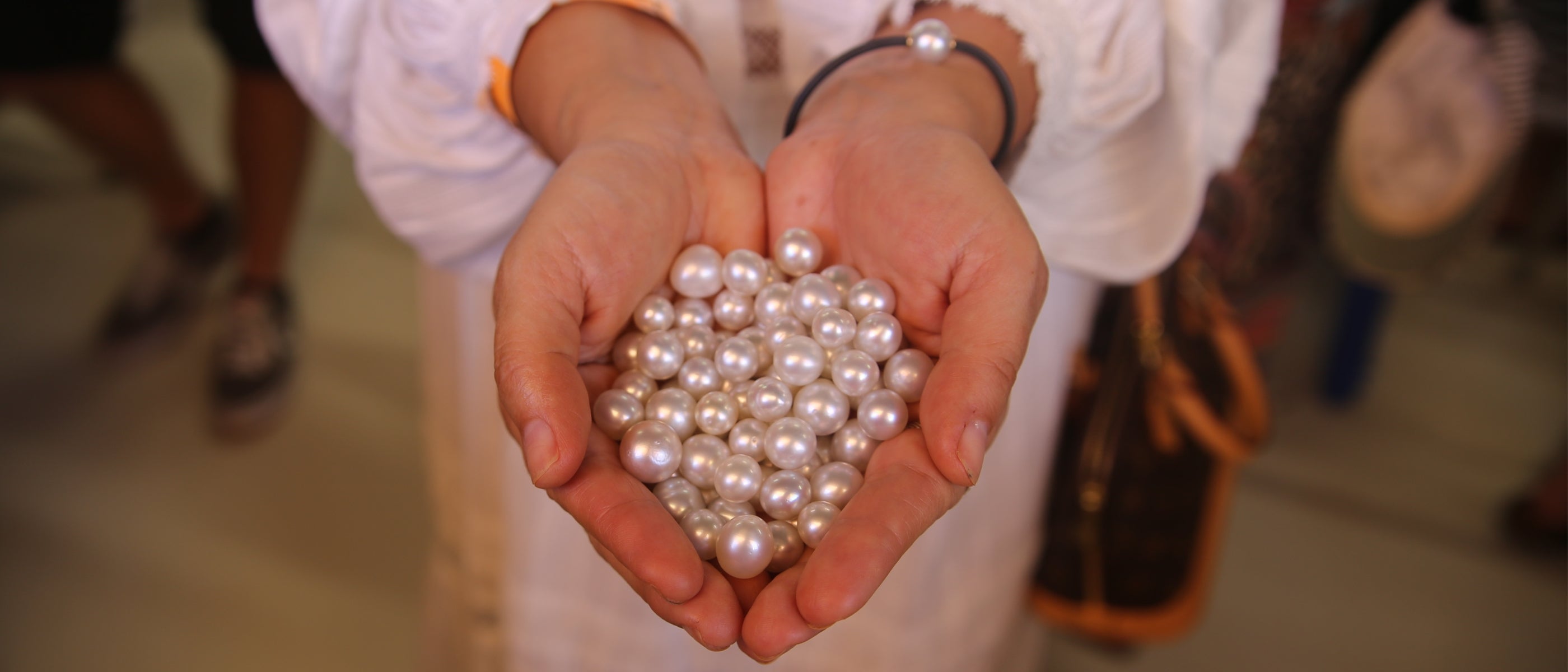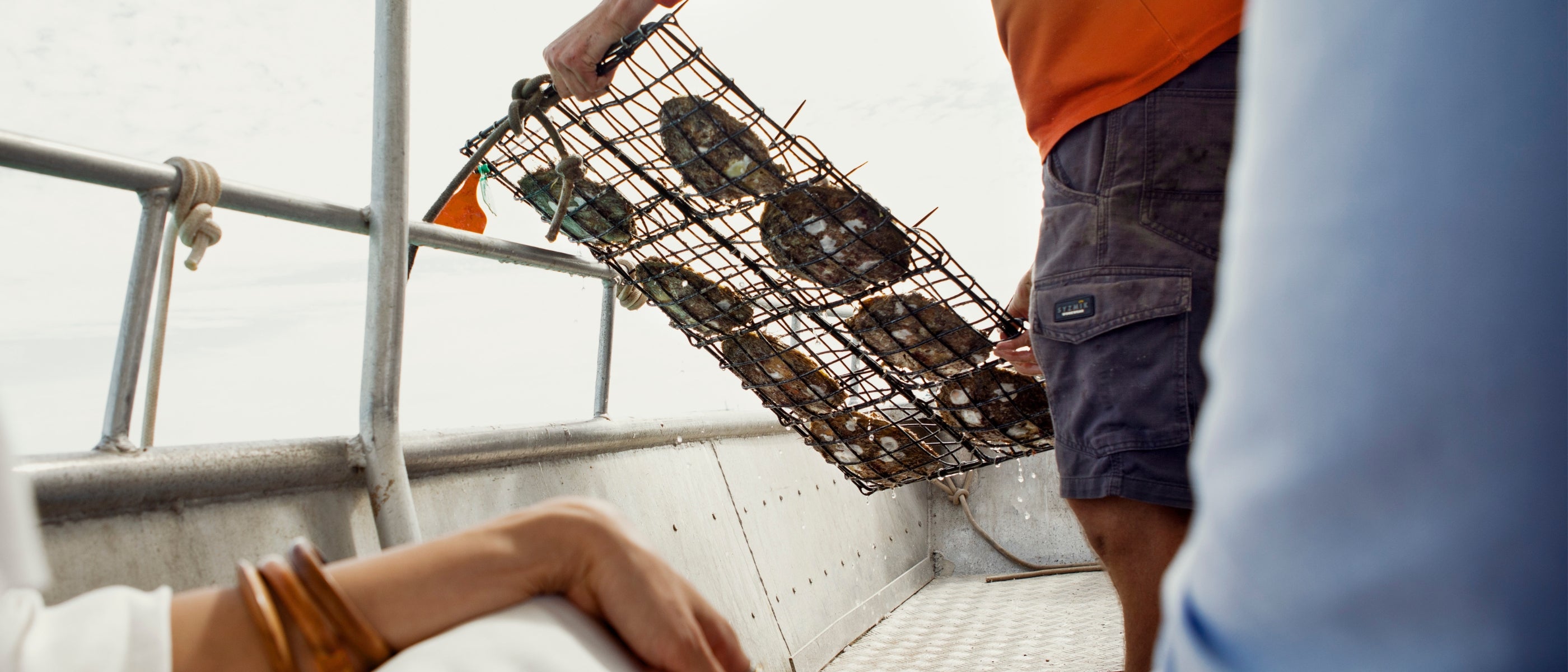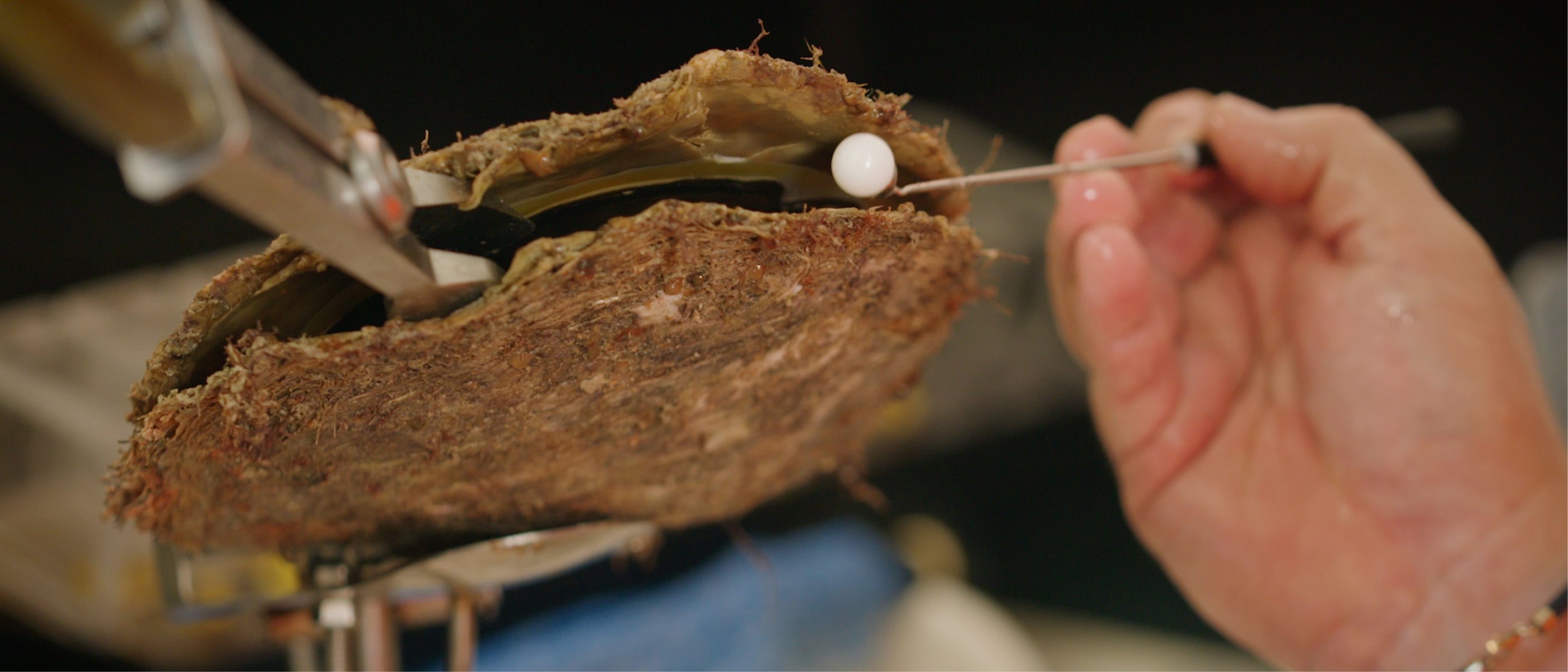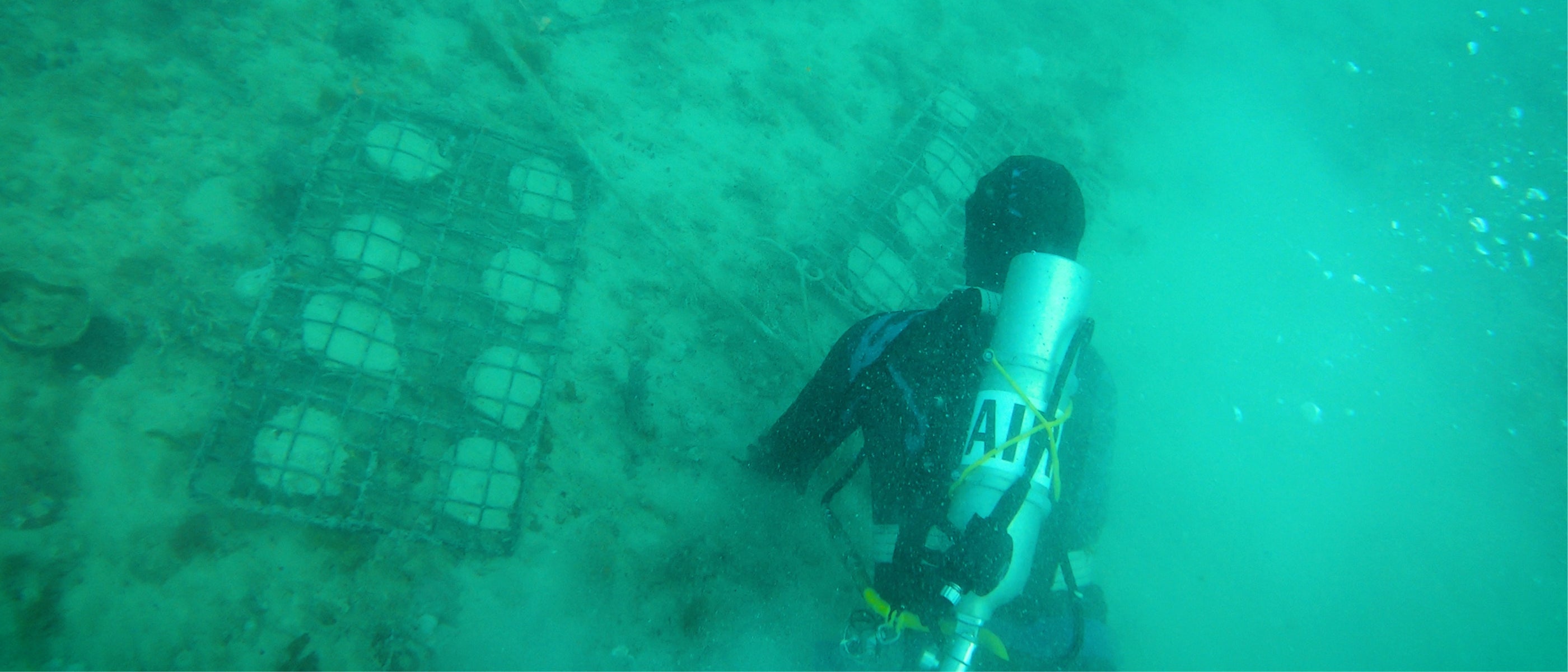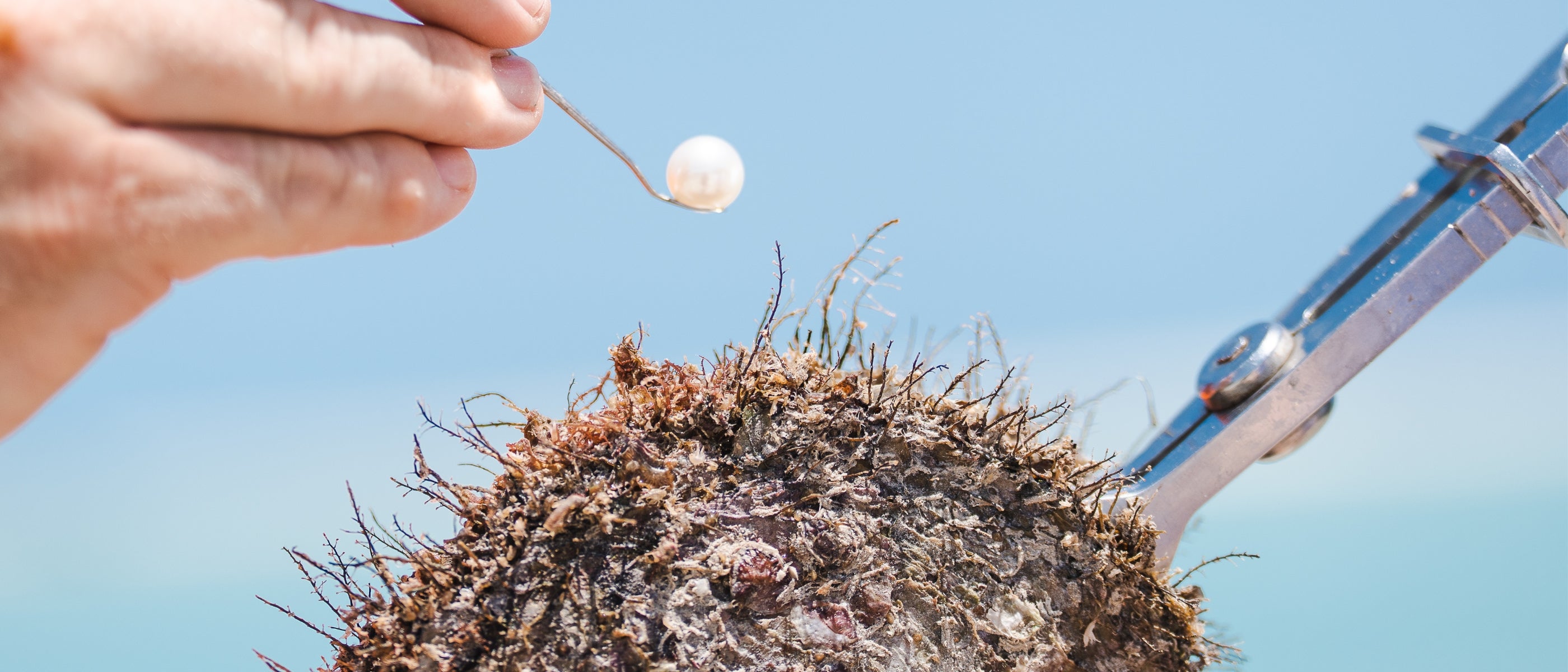Journey Of The Pearl
The Australian South Sea Pearl is the most revered pearl in the world for its stunning lustre, colour and size. Willie Creek Pearls sustainably produce Australian South Sea Pearls 38km north of Broome in Western Australia.
This is due to the use of the incredible Pinctada maxima oyster. Pinctada maxima are a bivalve mollusc that live on the ocean floor in shallow waters up to 20 meters deep. They thrive in the ocean environment on the North West coast of Australia, with the regions abundance of food in the warm, nutrient-rich water. 'Pinctada' is Latin for pearl producing and 'maxima' is Latin for large. Together, this name identifies the Pinctada maxima as the largest pearl producing oyster in the world.
Learn below the incredible process utilised at Willie Creek Pearl Farm in Broome to produce these stunning natural gems.
The Pinctada maxima Oyster
The availability of healthy Pinctada maxima oyster's are critical to the operation of sustainably producing Australian South Sea Pearls at Willie Creek Pearl Farm.
Through the modern pearling techniques our team utilise, there are two methods that can be utilised to source Pinctada maxima oysters for cultured pearl farming.
Method One - Fishing for Wild Pinctada maxima Oyster Stock
Pearl farming in Australia is fully allocated and regulated fishing industry that is governed by a legislative act and controlled by the Department of Fisheries. It makes a considerable contribution to the overall annual value of the aquaculture industry in Australia and is particularly unique in that it exhibits sustainability in a “triple bottom line” context - pearling is sustainable ecologically, economically and socially. There are only 17 pearl farming licenses in Western Australia.
To assist the industry’s sustainability, the various units of allocated wild shell quota are distributed across three zones, which are individually assessed annually to determine the total allowable catch (TAC) for the year. This is calculated relative to the specific zones, juvenile stock recruitment, mature broad stock abundance and historical catch per effort data. Shell is collected from these sites by divers for two reasons – for mother of pearl and for shells for seeding cultured pearls. Strict size guidelines of oysters exist for both purposes.
Willie Creek Pearls wild shell quota includes two units that have been specially allocated for the purpose of tourism. The commercial pearling operation has two lease sites and at any one time, there can be multiple years’ worth of stock in the water. During the various stages of the oysters productive life they are meticulously cared for and managed by the Willie Creek Pearls pearling team. As a result of our well managed fishery operations, we are proud to be Marine Stewardship Council Certified.
Method Two- Spawning Pinctada maxima Oysters
Willie Creek Pearls' land-based state of the art Aquaculture Facility was designed and constructed in 2017. It is used as an oyster nursery to stimulate and capture naturally occurring spawning events. This is done by selecting brood stock so that juvenile oysters can be created and reared to supplement the wild stocks that are fished annually from the various beds around the 80 Mile Beach area and the Lacepede Channel.
Pearl Oyster Seeding
Pearling technicians are highly skilled professionals performing hundreds of operations per day.
In the past, pearling technicians have been predominantly Japanese, however the success of the Australian industry has led to increased diversification with Australian and Indonesian technicians now common. Pearling technicians perform the delicate ‘seeding or nucleation’ operation by making a surgical incision into the oyster’s reproductive organ and then inserting a small bead or ‘nucleus’ that is typically sourced from another bivalve mollusc of the Amblema species (Mississippi Mussel shell).
During the operation, a small piece of nacre secreting mantle tissue from a donor oyster is inserted into the operation site, which develops into a sac around the nucleus within the organ. The shell is then safely housed within a panel and placed on the ocean floor to undergo a complex ‘turning’ process, which encourages orientation and retention of the nucleus for the development of round shaped pearls. During the process of elevating the oysters to the sub surface long lines, each shell is individually x-rayed to check if it has retained the seeded nucleus.
Caring For The Oyster
At the sea lease, there are numerous sub-surface long lines where ‘seeded’ oysters are ‘hung’ in panels so that they can thrive and grow in an area of the water column that is rich in nutrients and micro algae. Here they are cared for meticulously by our pearling team of skippers and deck hands. In addition to this there is series of ‘bottom lines’, which are on the floor of the sea-bed. These are used for pre and post operative pearl production husbandry practices such as oyster conditioning, resting and turning and oysters in this area are attended to by our divers.
The oysters sit close to the ocean’s surface, where they are in the warm and nutritious photic zone, which is the most productive area in the ocean. This part of the water column provides increased food availability and higher water temperatures. These factors provide an environment for healthy oysters to thrive and experience higher growth rate compared to sitting on the ocean floor.
This also creates an environment that promotes the growth of many other species and increasing competition for food contributing to extra stresses on our precious oysters. This interspecies competition is referred to as marine biofouling. Marine biofouling on our lines, panels and oysters decreases our oysters’ productivity in producing nacre to grow pearls and increases the potential for introducing marine pests to adversely affect the oysters. Not only does this effect the individual oysters, but as we hold up to 800 oysters on one line, the extra weight and drag in the tide can add up quickly putting the equipment in infrastructure under significant loads... not to mention the extra stresses it creates for our cleaning team!
We clean our panels, oysters and lines regularly, consistently and thoroughly so we
can continue to produce the highest quality Australian South Sea Pearls.
Harvesting a Pearl & Re-Seeding
After two years of meticulous care from our pearling team, our oysters are now ready for harvesting.
At this time, our pearling team navigate out to our sea leases where they collect the panels of oysters and bring them back to Willie Creek to be unloaded into the pearl oyster nursery. The oysters are then de-panelled and placed in pegging crates which then go into the holding tanks where they stay overnight.
The holding tanks water in then drained, allowing the oyster to 'relax' and open. Each oyster is then pegged with a door stop like wedge, this allows our oysters to stay open for the harvest and re-seeding process. Our technician replaces the wedge with a set of openers to allow more room and vision inside of the oyster. The oyster is positioned on their stand and a small incision is made, allowing them to extract the beautiful Australian South Sea Pearl the oyster has produced.
Once the pearl is extracted, our technician will assess the pearl against 5 virtues. If the pearl is of value and the oyster is healthy, the technician will proceed with re-seeding the oyster to begin the pearl production process again. A nucleus, similar to the size of the pearl just harvested will be placed back into the same incision.
Pinctada maxima Oyster Anatomy
The coastal waters north of Willie Creek provide a pristine environment for our pearl farm. Oysters thrive in these nutrient rich waters, filtering around 50 litres of water per hour feeding on microscopic phytoplankton and other organic material.
Explore the graphic below to learn about the incredible Pinctada maxima oysters anatomy.
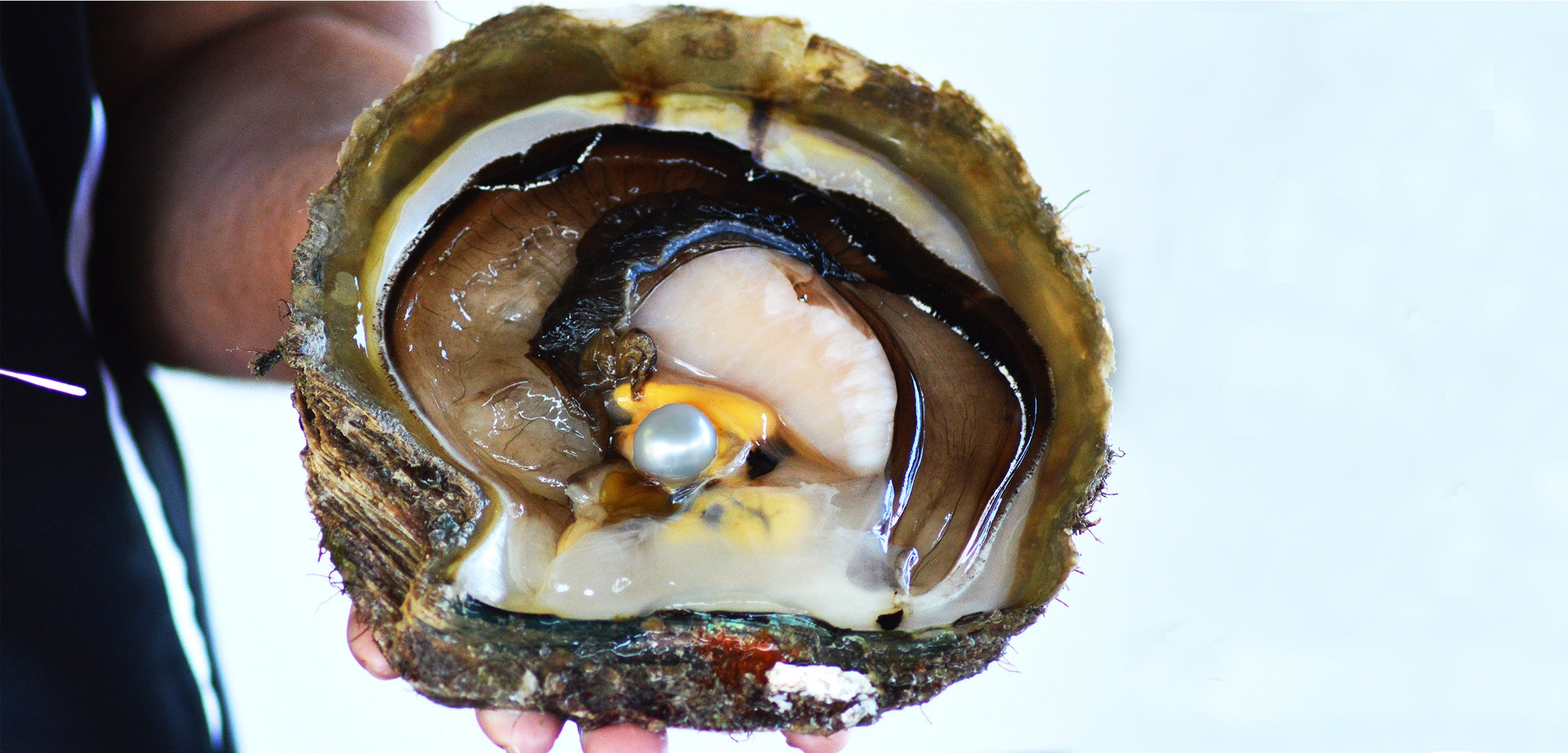

Gonad (Visceral Mass)
This is where we grow our amazing Australian South Sea Pearls. The Gonad is the oysters reproductive organ and is located in the most central and deepest section of their shell.
We can use the gonad to determine the sex of our oyster, a white/creamy colour indicates a male and a brighter orange represents the presence of eggs, meaning it is female.
Pinctada maxima oysters are hermaphrodites meaning that they can change sex with the majority of changes occurring during breeding season.
Sensory Tissue
Identified by the darker material running around the outer edge of the oyster, the sensory tissue detects change in water temperature, vibration and light.
Oysters are not sentient, but this is the closest thing our oyster have to a brain and allows messages to be sent to other parts of our oyster in response to external stimuli.
Foot
The foot is a small muscle that allows the oyster to move, bury itself in the sand or hold on to structures. The foot can extent outside of the open oyster when open. This helps them to stay in good areas when the tides are big, but also allows them to move on if conditions are not ideal.
Mantle Tissue
Critical anatomy for pearl production as this is where the oyster produces Nacre. Nacre is produced in a liquid form and is typically used as a self defence mechanism to protect the oyster.
If a foreign object such as sand, grit or a parasite enters the oyster, Nacre will coat it and as it hardens the irritation will stop and the foreign object won’t be able to cause further damage.
Gills
The gills are used for filtering the ocean water and extracting oxygen to breathe, but they are also used to collect food.
Mother of Pearl Shell
A tough, iridescent top layer of the Pinctada maxima oyster shell compromised of harden Nacre, the same substance of our pearls.
Mother of Pearl Shell was the target of the original 'pearling' industry in Broome, where collected shell was distributed worldwide to manufacture buttons. Mother of Pearl Shell can also be used cutlery handles, belt buckles, car paints and jewellery.
First Nations men have long worn protective and decorative Mother of Pearl Shell. The carved shell in this form is known as a Riji.
Anus
Where waste material is consolidated and expelled.
Abductor Muscle
This is the only part of the oyster that is attached to both sides of the shell. It relaxes and contracts to open and close the oysters shell. If the sensory tissue recognises a change on the outside of the shell, a message will be sent to the adductor muscle and our oyster will close.
This is also the only edible part the Pinctada maxima oyster. This is commonly known as Pearl Meat and is a rare and expensive delicacy.
Hinge
The hinge is the point that joins the two halves of the shell together. The hinge allows the oyster to open, while the adductor muscle keeps it shut.
Heart
The heart of a Pinctada maxima oyster works very similarly to the way a human heart operates in transporting oxygen filled blood around the system. The heart is also involved in pumping fluids to create a hydrostatic skeleton and enables the function of moving and extending the foot or operation of siphons during feeding.
Commercial Pearl Farming
Pearl farming in Australia is a fully allocated and regulated fishing industry that is governed by a legislative act and controlled by the Department of Fisheries. It makes a considerable contribution to the overall annual value of the aquaculture industry in Australia and is particularly unique in that it exhibits sustainability in a “triple bottom line” context - pearling is sustainable ecologically, economically and socially. There are only 17 pearl farming licenses in Western Australia.
To assist the industry’s sustainability, the various units of allocated wild shell quota are distributed across three zones, which are individually assessed annually to determine the total allowable catch (TAC) for the year. This is calculated relative to the specific zones, juvenile stock recruitment and expected shell abundance. Shell is collected from these sites by divers for two reasons – for mother of pearl and for shells for seeding cultured pearls. Strict size guidelines of oysters exist for both purposes.
Willie Creek Pearls wild shell quota includes two units that have been specially allocated for the purpose of tourism. The commercial pearling operation has two lease sites and at any one time, there can be at least two years’ worth of stock in the water. The various stages of the oysters productive life are meticulously cared for and managed by the Willie Creek Pearls pearling team. As a result of our well managed fishery operations, we are proud to be Marine Stewardship Council Certified.

